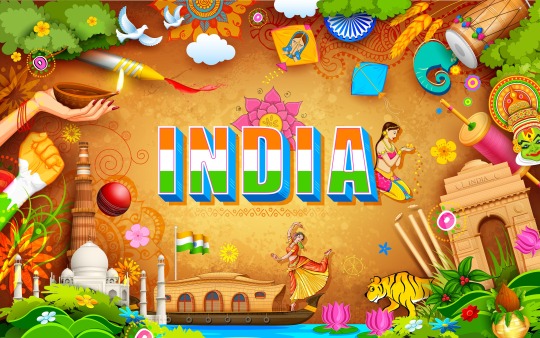Don't wanna be here? Send us removal request.
Text
culture of India
India, often referred to as the land of diversity, is a cultural kaleidoscope that has fascinated and enchanted people from across the globe for centuries. Its rich heritage, traditions, languages, art forms, and cuisines reflect a civilization that has evolved over millennia, leaving an indelible mark on the world. In this blog, we embark on a journey to unravel the multifaceted culture ,culture of India delving into its historical roots, religious practices, artistic expressions, and modern-day manifestations.

Historical Background:
The cultural history of India can be traced back to ancient times, with evidence of human habitation dating back to the Stone Age. The subcontinent has witnessed the rise and fall of numerous civilizations, including the Indus Valley Civilization, which flourished around 3300 BCE. Subsequent waves of migration and settlement by various ethnic groups, including Aryans, Dravidians, Greeks, Persians, and Mongols, contributed to the diversity of India's cultural landscape.
Religious Diversity:
India is the birthplace of major religions such as Hinduism, Buddhism, Jainism, and Sikhism, and has also been a melting pot of diverse faiths, including Islam, Christianity, Judaism, and Zoroastrianism. The religious tolerance and syncretism prevalent in India have resulted in a vibrant tapestry of rituals, festivals, and spiritual practices that coexist harmoniously. From the grand celebrations of Diwali and Eid to the solemnity of Buddhist retreats and Sikh gurdwaras, religion permeates every aspect of Indian life, shaping its customs, beliefs, and social structures.
Art and Architecture:
Indian art and architecture are renowned for their intricacy, symbolism, and spiritual significance. The ancient rock-cut temples of Ajanta and Ellora, the majestic forts and palaces of Rajasthan, and the exquisite carvings of temples in Khajuraho are testaments to India's rich architectural heritage. The country's artistic traditions encompass a wide array of mediums, including painting, sculpture, pottery, textiles, and performing arts such as dance, music, and theater. Classical dance forms like Bharatanatyam, Kathak, Odissi, and Kuchipudi, with their roots in mythology and spirituality, continue to captivate audiences worldwide with their grace and elegance.
Cuisien:
Indian cuisine is as diverse as its culture, with each region boasting its own unique flavors, ingredients, and cooking techniques. From the fiery curries of the south to the aromatic biryanis of the north, Indian food is a gastronomic delight that tantalizes the taste buds with its rich spices and bold flavors. Staples like rice, wheat, lentils, and vegetables form the foundation of Indian meals, which are often accompanied by chutneys, pickles, and dairy products like yogurt and paneer. Street food is also a ubiquitous part of Indian culinary
culture, offering a tantalizing array of snacks and sweets that cater to every palate.
Literature and Language:
India has a rich literary tradition dating back thousands of years, with ancient texts like the Vedas, Upanishads, and epics like the Ramayana and Mahabharata shaping the cultural consciousness of the nation. Sanskrit, the classical language of ancient India, has been the vehicle for some of the world's most profound philosophical and literary works. Over the centuries, regional languages like Tamil, Telugu, Kannada, Bengali, Marathi, Gujarati, and Punjabi have flourished, producing a wealth of literature in poetry, prose, and drama. The Indian diaspora has also made significant contributions to world literature, with writers like Salman Rushdie, Arundhati Roy, and Jhumpa Lahiri garnering international acclaim for their works.

Modern Cultural Expressions:
While India's cultural heritage is deeply rooted in tradition and history, it is also a dynamic and evolving entity that continues to adapt and innovate in response to changing times. The advent of globalization, urbanization, and technology has ushered in new forms of cultural expression, from Bollywood films and indie music to contemporary art and fashion. Social media platforms like Instagram and YouTube have provided a platform for young Indian artists, musicians, and influencers to showcase their talents and connect with audiences around the world. Despite the challenges of modernization, India remains proud of its cultural heritage, embracing both tradition and innovation in equal measure.
Conclusion: India's cultural tapestry is a testament to the resilience, creativity, and diversity of its people. Across the length and breadth of the subcontinent, from the snow-capped Himalayas to the sun-drenched beaches of Kerala, the spirit of India's cultural heritage continues to thrive, enriching the lives of millions and inspiring generations to come. As we celebrate the vibrant mosaic of traditions, languages, and customs that make up the fabric of Indian society, let us also recognize the importance of preserving and safeguarding this invaluable legacy for future generations to cherish and embrace.
3 notes
·
View notes